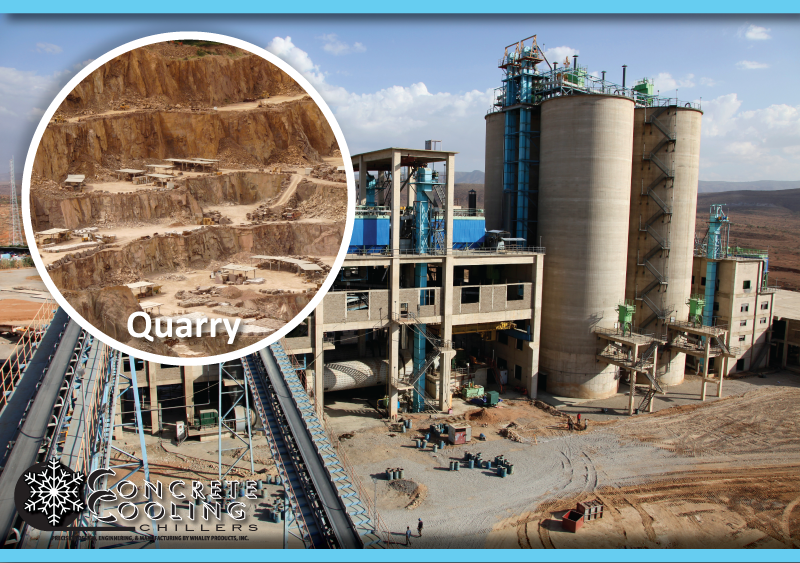Concrete manufacturing encompasses the basic task of quarrying raw materials to the final bagged powder we know as cement. This manufacturing process is broken down into six separate phases.
Quarrying
The raw materials needed for creation of cement are calcium, iron, aluminum, and silicon. These minerals are found in limestone, clay, and sand. The process of digging out these natural materials from the earth with heavy machinery is known as quarrying.

Grinding/Blending
Once the raw materials are available testing is done to obtain the mineral content. Once this is done the proper ratio of each material can be ground down to a powder and blended. This is done with a rotating table and heavy wheel grinders. Without the proper ratio of minerals in the raw mix cement clinker cannot be formed inside the kiln.

Pre-Heating
This process utilizes hot waste gases produced by the rotary kiln to heat raw mix. This is done in a series of vertical cyclones prior to the mix entering the kiln. This process helps reduce energy costs and creates a smooth transition of raw mix to the heated kiln contents.

Kiln Phase
A rotary kiln is heated to 1450⁰C with an internal flame that reaches 2000⁰C. This is a long rotating cylinder set at a slight incline. As the kiln rotates, the molten slurry is directed forward and cooled as it gets further from the flame. This phase produces the clinker compound, calcium silicate, which causes the hardening chemical reaction when it is re-hydrated.

Cooling/Final Grind
Once the clinker exits the rotary kiln, forced air continues the cooling process. The heat and gases released while cooling occurs are re-directed to the pre-heating cyclones. Once the clinker has cooled, it is fed into a rotating ball mill. Inside this rotating drum are steel balls. They are tumbled inside the drum along with the clinker crushing it to a fine powder. Gypsum is also added along with other minerals, depending on the type of cement characteristics desired.

Packaging/Shipping
The finished cement powder is brought to holding silos by conveyor belts. From the silos it can be packaged into bags for hardware stores that require small consumer portions. Most cement is shipped by the truckloads to construction sites that require massive amounts of products. It can also be shipped by train or boat because of its long shelf life post production. Once the cement makes it to the end consumer, it is then ready to be mixed with aggregate to create concrete. The concrete goes through chemical changes depending on the aggregate used. This creates different properties in the hardened concrete.
